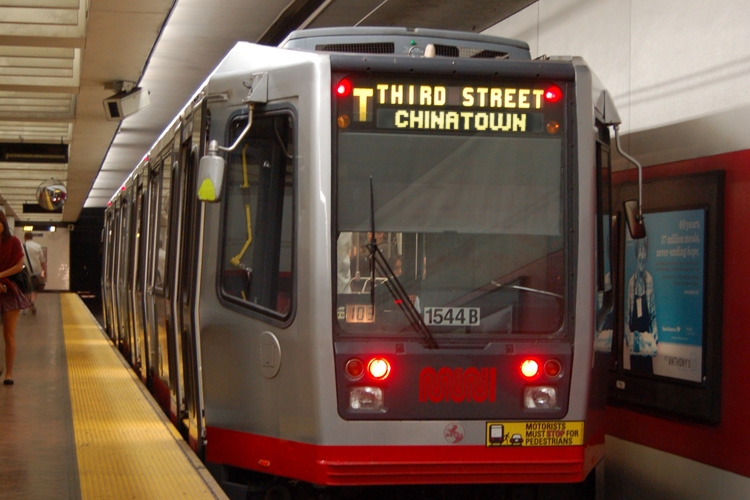The $1.6 billion Central Subway project in San Francisco reached a major milestone this week with the installation of the initial tracks that will change the alignment of the T-Third light rail train to the north towards the city's Chinatown district. Looking down 4th Street, the first tracks that will accommodate the Central Subway’s alignment from 4th and King to Chinatown can now be seen.
The project extends the T Third Line from the 4th Street Caltrain Station to Chinatown, providing a direct, rapid transit link from the Bayshore and Mission Bay areas to SoMa, Union Square and downtown. Four new stations are being built along the 1.7-mile Central Subway Project alignment:
• 4th and Brannan Station at 4th and Brannan streets (street level)
• Yerba Buena/Moscone Station at 4th and Folsom streets (subway)
• Union Square/Market Street Station on Stockton Street at Union Square (subway)
• Chinatown Station at Stockton and Washington streets (subway)
This phase of the project began on November 6 and completed November 19. It included drilling into pavement and removing old tracks to install a new track configuration.
The Central Subway Project is the second phase of the San Francisco Municipal Transportation Agency’s (SFMTA) Third Street Light Rail Transit Project. Phase 1 of the project constructed a 5.1-mile light-rail line along the densely populated 3rd Street corridor. The first segment of the T Third Line opened in April 2007, restoring light-rail service to a high transit-ridership area of San Francisco for the first time in 50 years.
Construction of the subway tunnel and stations began in 2013 and are scheduled to complete in 2017, with the project slated to open to the public in 2019.
One of the most interesting construction highlights and challenges of the project has been the tunneling, which completed in the summer of 2014. While reaching depths of 100 ft below busy city streets, massive earth-pressure-balance tunnel-boring machines, or TBMs, cut through varying substructure and at times came within 8 ft of existing Bay Area Rapid Transit (BART) tunnels.
SFMTA's resident engineer Sarah Wilson told me in 2013 that during the boring process the tunnels pass through both soft ground and Franciscan formation, "which is heterogeneous rock that is not predictable except in its unpredictability." Thankfully the two 350-ft-long, 750-ton TBMs were able to adjust their blades and cut through any sand, dirt or rock that got in their way.
The project was so fascinating and complex that it was named the 2015 Outstanding Transportation Project of the Year by the San Francisco section of the American Society of Civil Engineers (ASCE).
A joint venture of Barnard Impregilo Healy, Bozeman, MT, led the tunneling construction. Tutor Perini, Sylmar, CA, is leading construction of stations, tracks and operating systems. WSP | Parsons Brinckerhoff worked on preliminary engineering in 2003, as part of two joint ventures for the final design of the tunnels and stations.

